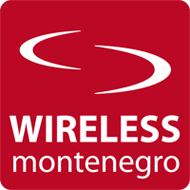Introduction of digital radio communications system to be used for communication among the authorities and organizations dealing with security-related activities, fire fighting, medical protection and other forms of property and personal protection, as well as private companies, was initiated in November 2012.
Internationally standardized digital wireless network replacing existing independent analogue radio networks was now available for the first time. In addition to the basic use of radio communication for individual units, such networks are planned for potential linking of various units into one functional network or group. Such feature is specific of this form of digital radio networks and is most frequently used in line with emergency plans.
Use of such digital radio networks is, as a rule, limited to solely public authorities and institutions with the possibility to be available for use to other units which may require such form of communication.
Numerous advantages of this modern security network may be used by the following organizations:
- The Police Administration of Montenegro;
- Fire-fighting units in all municipalities;
- Emergency units/dispensaries;
- Army (for the second mission);
- Other government organizations;
- Private organizations.
The citizens of Montenegro will also have indirect benefits from coordinated communication among emergency services, and faster and more reliable assistance in emergency situations.
Digital radio network will ensure communication within agencies, both in daily use, and in extreme situations. It will consist of 64 base stations deployed throughout Montenegro. In line with the decision of the Agency for Electronic Communications and Postal Services, Wireless Montenegro is provided with authorization to use radio frequencies within band 380–400 MHz.
In addition to Montenegro, other countries have already introduced TETRA network as well, such as Austria, Belgium, Bulgaria, Croatia, Denmark, Estonia, Finland, Germany, Great Britain, Hungary, Iceland, Ireland, Lithuania, Macedonia, the Netherlands, Norway, Portugal, Serbia, Slovenia and Sweden.
TETRA standard is specially designed to meet the needs of authorities and organizations carrying out security-related tasks. There is no other standard providing similar performance in group communication, surveillance, security and network availability. TETRA standard also provides the possibility of data transfer.
The Police Administration of Montenegro, search and rescue units in individual municipalities and fire fighting units are already actively using TETRA network and the advantages of this new technology, such as good sound quality and larger coverage.
TETRA digital radio network has become, within a short period of time, an inevitable segment in providing conditions for smooth organization of major events such as visits of state officials, celebrations and sports events, and for daily routine tasks.
What is TETRA? TErrestrial Trunked RAdio
Initially it was “Trans European Trunked Radio“
- Advanced digital radio-communications system for public security systems (police, fire fighting units, emergency units…), army, utility enterprises, transport, etc.
- Operating in Europe, Asia, Africa, South America and the Middle East.
- A standard promoted by ETSI – EUROPEAN TELECOMMUNICATION STANDARDS INSTITUTE
Essential TETRA standards and standard interfaces
- Air Interface (AI)
- Voice plus data (V+D)
- Direct Mode Operation (DMO)
- TETRA Speech Codec
- Packet Data Optimized (PDO)
- Inter-System Interface (ISI)
- Peripheral Equipment Interface (PEI)
Dimetra IP radio-system consists of the following main components:
- Switching and Management Infrastructure (SwMI) or MSO
- Base stations
- Network management subsystem
- Dispatching subsystem
- Terminals
Operating modes
- Wide Trunking (TMO)
- Local site Trunking
- DMO
Wide Area Trunking (TMO)
Normal operating mode for each site in the system. If all sites are in the trunking system then the communication paths cover the entire zone.
Zone controller controls call processing and audio routing, each site has an active control channel and at least one operating traffic channel.
Fall Back Modes – types of operation in the event of TMO outage
Local Site Trunking
An operating mode used when control link to a site is lost or when all voice links to a site are lost. Sites to which link is interrupted are switched to local trunking operation which provides service for the terminals registered on that site. Audio signal is not routed towards MSO and remains within the site.
Local SC performs call processing while ZC continues the processing for other sites.
Direct Mode Operation (DMO)
If all links to radio-infrastructure are lost, individual terminals support DMO and may switch to this operating mode.
Terminal uses its antennae and radiated power to communicate with other terminals within the radio band.
Voice communication services
- Group call (one-to-many)
- Multi-group
- Individual call (semi-duplex and full duplex)
- Telephone interconnection (PABX)
- Scanning
- Dynamic group allocation
Data services
- Status services – sending predefined messages to dispatcher console
- Short Data Service, SDS – textual messages (140 characters)
- IP package transmission – data transmission (point-to-point)
- Emergency Alarm – sending alarms to the console and the users of the same TG
Security services
- Authentication
- Air interface encryption
- End-to-end encryption
- Separate technical and operating management
